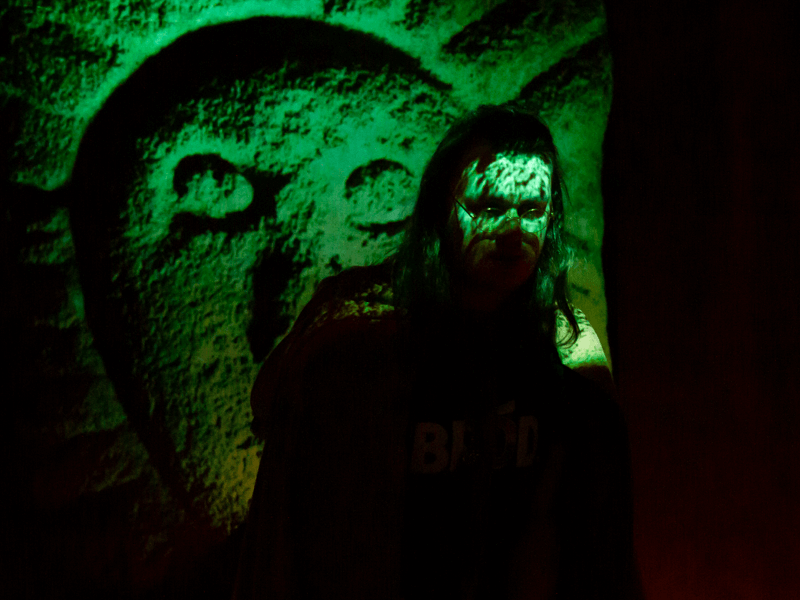Samhain – How an Ancient Celtic Festival Became the Halloween Holiday

Halloween is celebrated all across the world – a celebration of all things creepy as we ease ourselves in the dark, cold nights of winter. But many of the traditions such as fancy dress, the ghosts and ghouls, and the tricks and treats come from the ancient Celtic festival of Samhain, which was celebrated at the of October; a time marking summer’s end (from which the name comes), the end of the harvest, and the beginning of the dark half of the year. The cattle were returned from summer grazing, and with crops harvested and fresh meat, Samhain was a time of great feasting before the cold, harsh winter set in. It was thought that as we approach the dark half of the year, the boundary between our world and the Otherworld was at its weakest, allowing fairies and other creatures to enter this world and cause havoc. To prevent the evils of the Otherworld affecting you, people engaged in many different protective rituals, devised to appease the fairy folk.In Cork and Kerry folklore, winter begins when the Cailleach strikes the ground with her blackthorn staff
It’s thought the festival goes back at least 4,500 years. The Mound of the Hostages in Co. Meath is a neolithic passage tomb, with the chamber aligned so that it is illuminated by the rising sun on the morning of Samhain. Of course, it’s celebrated just a little differently now than it was thousands of years ago… but many of the things that make Halloween what we know and love now, are taken from these old traditions.The passage at the Mound of the Hostages, via Newgrange Tours
As the fairy folk and Otherworld creatures crossed into this world, they sought out to cause chaos and destruction. It was unwise to leave your home once darkness fell, for fear the fairies would steal you away. But there was a way to trick them – by using a disguise. So simply dress up as an animal or anything non-human, and you’ll remain in this world.
Samhain was also a celebration of the dead, although it is fair to say the dead are feared rather than celebrated for Halloween now. This was another reason to stay home, and get to bed early – leaving the windows and half doors open so the people from that house who had died could return home. Of course, travelling back from the dead is hungry work, so the family would leave an extra place at the table with food for the dead – often treats and bread. This feast was for the dead only. If you did eat this food, it was thought that you’d spend all of your own afterlife hungry. That’s certainly one way of getting to keep your Trick or treat haul. But the dead didn’t just come back to the home. According to Lady Gregory’s Visions and Beliefs In The West of Ireland, the dead would go to the fairy hills and dance on the eve of Samhain alongside the fairies.The Jack o’ Lantern is an icon of Halloween – though it wasn’t always a pumpkin. In the original story, Jack cheated the devil on a deal. So when he died, he couldn’t enter heaven or hell. The only thing he was given was a lump of coal from the gates of hell to help him light the way as him roamed the earth for all eternity. He placed this coal inside a carved-out turnip as a makeshift lantern. However, when people emigrated to America and brought this tradition, they found pumpkins were more plentiful and more importantly – much easier to carve. We like to stick with the traditional carved turnips here at the museum, although they’re tougher to carve, after a few days, the turnip shrivels and puckers, taking on a gruesome, rotten flesh-like appearance.Fortune telling was popular at Samhain, especially to predict how your love life would be. You could look into a mirror by candlelight at midnight and see the face of your future love looking back at you. But these rituals weren’t without risk – one widow tried this, tired of being alone after her husband drowned at sea. When she stared into the mirror, she saw the face of her dead husband looking back – causing her to die of fright, and mysteriously her lungs filled with saltwater. Alternatively, peel an apple and throw the skin over your shoulder – the skin will show the initials of your future husband or wife.
One of the best known and loved fortune telling items is Barm Brack – a bread sweetened with fruit. Items would be baked inside the loaf, and whatever item you found in your slice of brack determined what the following year would be like for you. A small stick meant you’d be caught up in rows; a pea signified there would be no marriage for that person; a coin brought wealth and the ring meant imminent marriage for the person.
This October, we’ll be adding a Samhain flavour to both our daytime tours and evening Darkland shows – with stories, traditions, and maybe how to keep yourself safe this Halloween. Join us at The National Leprechaun Museum this Halloween for our adults only Darkland shows from October 26th-31st. Based in the old Jervis Street Morgue, the museum is the perfect setting for the stories too dark for daytime. Tickets for Darkland at Halloween are €18 and available online at http://www.leprechaunmuseum.ie – be sure to book ahead, or else you’ll end up screaming like a banshee!




